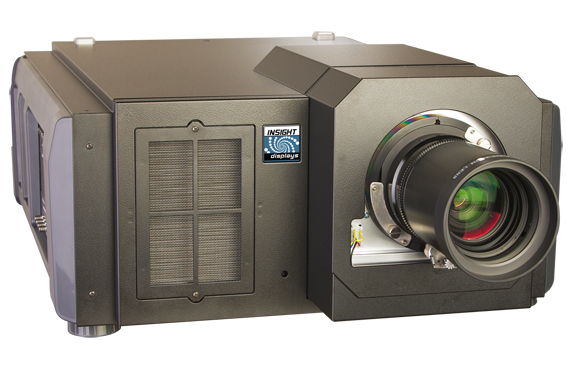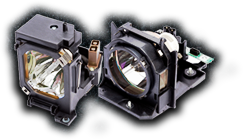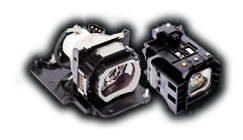Laser projectors: Are they a fad or the future of home theater projectors? That’s a good question. Today, commercial laser projectors and laser projectors for home theaters are making their way slowly to market.

In fact, at CEDIA this year, many of the best-selling projector brands, including Sony and Epson, rolled out new projectors that feature cutting-edge laser and hybrid LED technology. Commercial movie houses, including IMAX, are embracing laser technology, too. There are even companies working on retrofitting kits to update bulb-based projectors.
But is this just a fad? Or will your xenon-bulb projector be obsolete in a year or two?
First, you don’t have to worry. Bulb projectors are here to stay, at least for a while. The home theater projectors that we use today are powerful and many provide stunning image quality. Eventually, though, they may give way to hybrid and laser technology. The reason? 3-D movies and 4K content are becoming more and more common, and that means our projectors need to be more powerful and brighter. In that respect, laser projectors might be the wave of the future.
How Laser Projectors Are Changing Movies?
Many directors loathe digital projection. When Director Christopher Nolan’s “Interstellar” hit theaters, he said he preferred the movie to be shown at theaters with traditional 35mm print projectors. Director Quinten Tarantino went as far as to call the shift to digital the death of cinema as he knew it. Their reason is that today’s digital projectors can’t match 35mm film print.
The images are dimmer. The detail isn’t as crisp. The colors aren’t as vibrant and the contrast is weaker. For 3-D movies, these problems are even more pronounced, because of the way these movies are displayed. Movie theaters use passive 3-D projection, which shows each eye a dimmer, less resolute picture. Thus, with traditional digital bulb projectors, viewers see a very dim picture in 3-D, and a lot of the detail is lost.
But that’s the virtue of laser projection.
Commercial laser projectors can effectively double the brightness output of xenon-bulb projectors, 60,000 lumens compared to top-end digital projectors at 30,000. That brightness means greatly improved contrast, color saturation (they produce more perceivable color than today’s digital projectors) and they’re able to display content with higher frame rates. Plus, laser projectors have much longer bulb lives, up to 20,000 hours or more. Effectively, laser projectors compete much better with 35mm film stock, and that’s why movie houses are so interested in making the transition.
Laser Home Theater Projectors
Lately, there’s been a shift to lasers in home theater as well. First, there was a move to hybrid LED/laser projectors that boost both brightness and bulb life. In fact, there are several hybrid options on the market, and many are reasonably priced. Lately, though, the push for 100% laser home theater projectors has been taking place.
For instance, at CEDIA, Christie Digital Systems – which showed the first commercial laser-projected movie in 2012 – entered the home market for the first time. The company introduced the DDS555-GS, a single-chip laser/phosphor projector with a brightness rating of 5,000 lumens. The price: $14,000. Plus, Digital Projection unveiled the Insight 4K Laser projector. The specs are truly impressive: The Insight has a brightness rating of 12,000 lumens and projects in UltraHD 4K. The cost: more than $100,000.
Plus, Sony and Epson introduced laser 4K projectors as well, that embrace the new technology. Of course, for most movie cinema enthusiasts, a laser doesn’t make sense. They’re impressive, sure, but as there just isn’t that much 4K content available yet. Plus, there are many bulb projectors available that can display 3-D and HD content well.
Price Is Very Limiting
Like any new technology, the price of laser projectors is astronomical right now. Commercial laser projectors can cost half a million dollars, compared to $60,000 for commercial xenon-bulb projectors. And early home theater projectors like Sony’s new Ultra Short Throw start at $50,000. They’re exponentially more than today’s standard digital projectors.
That means a shift to laser projection will take some time. Also, early iterations of laser projectors have had some issues like speckle phenomena. But as the technology evolves and improves, 4K and 3-D content continues to grow in popularity and the costs come down, it’s seems very likely that laser projectors won’t be just a fad.


